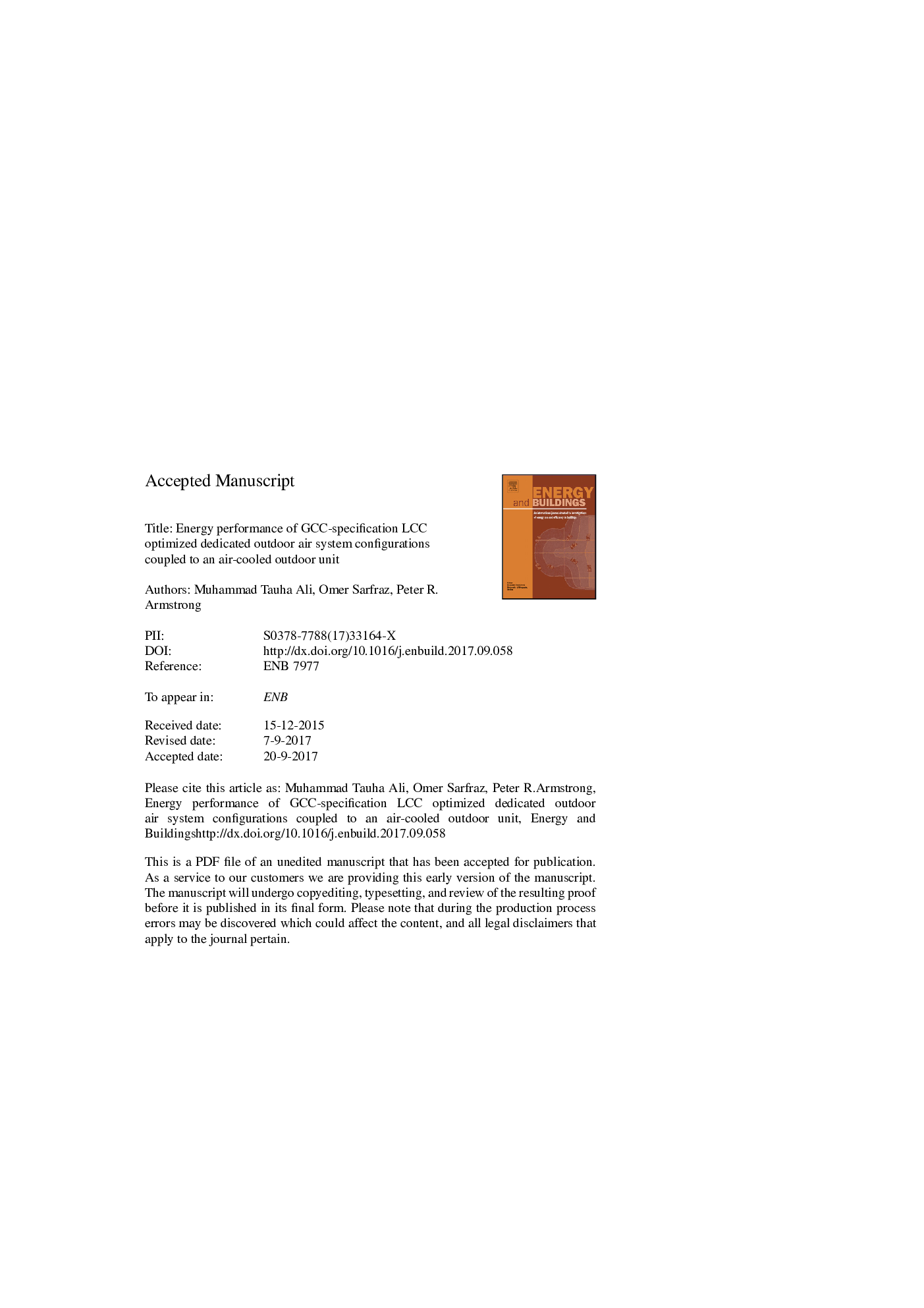| Article ID | Journal | Published Year | Pages | File Type |
|---|---|---|---|---|
| 6729418 | Energy and Buildings | 2018 | 23 Pages |
Abstract
Direct expansion (DX) dedicated outdoor air system is shown to be a cost-effective energy efficient complement to ductless variable refrigerant flow and radiant cooling systems by providing conditioned ventilation air at the required set point temperature and relative humidity in an energy efficient manner. We compare five balanced flow dedicated outdoor air system configurations under typical office/lab ventilation loads coupled to an air-cooled outdoor unit for 24 Gulf Cooperation Council (GCC) locations representing GCC climates. All configurations use an enthalpy recovery wheel (ERW) to remove heat and moisture from intake air-before it reaches the active DX dehumidification element-by passive heat and mass transfer to the exhaust stream. It is found that of two run-around heat exchanger configurations, using a rotary heat wheel across the evaporator is a more efficient configuration than placing the heat wheel (HW) between the supply and return air streams. Furthermore, adding a subcooling coil for reheat in parallel to the HW results in higher efficiency than adding the coil in series with the HW. The Life cycle cost optimized ERW and HW effectiveness for the configuration with HW between supply and return air was found to be 0.86 while the ranges for run-around HW configurations with subcooling/reheat were found to be 0.8-0.85 for ERW and 0.74-0.82 for HW in GCC climates with significant dehumidification loads. Thus, the evaporator run-around HW reduces the volume, mass and cost of the DOAS unit while providing higher overall efficiency.
Related Topics
Physical Sciences and Engineering
Energy
Renewable Energy, Sustainability and the Environment
Authors
Muhammad Tauha Ali, Omer Sarfraz, Peter R. Armstrong,
